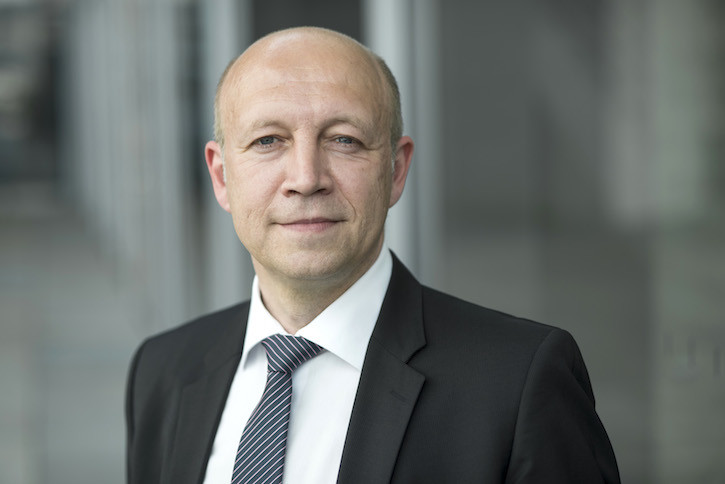
Today the U.S. and China will join in signing the Paris Agreement – the first global accord to commit nearly every nation to take domestic actions to tackle climate change. The question now is: How is China, and how is the world, going to implement these commitments on the ground?
Part of the answer is more clean energy. An upcoming Paulson Institute paper looks at how China’s Jing-Jin-Ji region could lead in piloting policies that increase the amount of renewable energy in the power mix and points to lessons from Texas and Germany, two places that have managed to dramatically reduce curtailment rates to levels as low as 1.16%. The Paulson Institute’s Anders Hove recently spoke with Andreas Kuhlmann, chief executive of DENA, German Energy Agency, for insights on his country’s renewable energy successes. Though China has surpassed Germany as the country with the largest installed capacity in both wind and solar, Germany derives a much larger percentage of energy from renewables—as high as 66% of the total generation on some days, and 30% on an annual basis—and is much more efficient at using this energy with very little curtailment.
 The city of Zhangjiakou, which will co-host the Winter Olympics with Beijing in 2020, is planning to build up to 50 GW of combined wind and solar capacity, almost as much as the whole of Germany has today. Germany is a world leader in integrating variable renewable onto the grid, with the highest penetration among major world economies. What can Zhangjiakou learn from your experience?
The city of Zhangjiakou, which will co-host the Winter Olympics with Beijing in 2020, is planning to build up to 50 GW of combined wind and solar capacity, almost as much as the whole of Germany has today. Germany is a world leader in integrating variable renewable onto the grid, with the highest penetration among major world economies. What can Zhangjiakou learn from your experience?
I visited Zhangjiakou in March, and as I understand it, one of the main questions in that region is how to integrate renewable energy into the grid. I hear a lot about China and State Grid working on connecting grids globally, an interesting debate. We should not neglect though to discuss possibilities and necessities on the regional distribution grid level.
So the current issue that I see is more with the national transmission and regional distribution grids. That’s what we see in Germany as well, and we have had to scale up the distribution system rapidly. In those regions with a strong existing distribution grid, there is less pressure for new investment, and good distribution grids can also become smart distribution grids by implementing the latest technology, which enables us to integrate more renewable energy while avoiding some costly transmission investments. The direction in Germany is towards intelligent and flexible grid management as a means to absorb variable energy. At the same time, Germany expects to make significant transmission and distribution grid investments over the next 10 years with the intent of integrating more renewable energy—the latest estimate is over $45.2 billion (RMB 293 billion) combined for both transmission and distribution investment.
 How should grid planners think about the amount of new transmission lines needed for each unit of new renewable energy? In China, about 15% of wind energy is curtailed or wasted due to the inability of the grid to absorb renewable energy. What is considered acceptable in Germany?
How should grid planners think about the amount of new transmission lines needed for each unit of new renewable energy? In China, about 15% of wind energy is curtailed or wasted due to the inability of the grid to absorb renewable energy. What is considered acceptable in Germany?
Basically the grid expansion and renewable energy expansion should have the same pace, but not necessarily with the intent of absorbing every last kWh from renewable energy—our studies show that this would result in excessive cost for the ratepayer. Therefore, current draft legislation limits the grid extension obligations of the system operators according to the principle that curtailment of 3% of annual renewable energy production is acceptable for grid planning. Renewable energy will still have priority dispatch and be compensated at 95% for any curtailment. In those regions where you have a very strong existing distribution grid, there may be less need to extend the transmission grid. The other point is that if you strengthen distribution grids, you can make them smart distribution grids with newer technology. That is helpful for integrating renewable energy into the system.
 At the Paulson Institute we have talked a lot about the importance of data transparency in accelerating clean-tech markets, for example with building energy use disclosure and carbon emissions trading data. What can you tell us about the importance of electricity data transparency that may be relevant as China begins to reform its power sector?
At the Paulson Institute we have talked a lot about the importance of data transparency in accelerating clean-tech markets, for example with building energy use disclosure and carbon emissions trading data. What can you tell us about the importance of electricity data transparency that may be relevant as China begins to reform its power sector?
In Germany and Europe, electricity demand forecasts as well as actual data on load and generation are published online by various transparency platforms, such as the European Network of Transmission System Operators for Electricity (ENTSO-E). The European Energy Exchange publishes daily information on power prices and traded volumes. The general benefit of distributing this information freely is to make the energy market more transparent and therefore ensure a functional market. After the 20-year guaranteed contracts for feed-in tariff for renewable energy start to end in 2020, this information will be even more relevant to owners of renewable energy plants (whether rooftop solar panels or utility-scale wind and solar plants).


